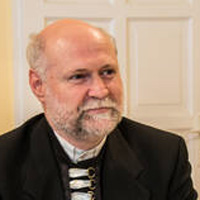16 December, 18:00-20:00
One Church and the Plurality of Languages and Ethnicities
Dr. Stefan Cosoroaba (ZETO, Sibiu)
Where do the dividing lines run? Where do areas of tension open up? One church with several languages and cultures or different churches for each ethnic group, language and culture? From the perspective of this question, is there a different approach in Western Europe and Eastern Europe?

A quote from
Stefan Cosoroaba (ZETO):
“Die Sprache der Kirche ist die Seelsorge”

Summary
by Dr. Volkmar Ortmann (Evangelischer Bund)
In the fourth lecture of the Digital Academy, Dr Stefan Cosoroaba (ZETO/CPCE) spoke on the topic:
One Church and the Plurality of Languages and Ethnicities
The connection between religion, language and identity was examined from different perspectives in this lecture. Examples mainly from Romania with its not only denominational but also linguistical diverse congregations illustrated the importance of both confession and language in their significance for the feeling of belonging. From a historical perspective, however, it can be seen that it was not until the 19th century, in the course of an increasing national consciousness, that language appeared as a real distinguishing feature alongside denomination and superimposed its meaning.
Currently, however, due to demographic and social changes, parishes are faced with the problem that language is still important as a distinguishing feature, but at the same time fewer and fewer members have a different mother tongue.
This draws attention to the fact that language is obviously more than a medium of communication. Language also expresses a sense of belonging.
Nevertheless, the question arises as to whether and, above all, how a change in linguistic identity should be made. In practice examples can be found of how such a change is gradually taking place: starting with the spoken language in the context of worship services, through the language of prayers and sermons to the translation of Bible texts and finally of songs.
However, there are quite different interests here: on the one hand the orientation towards the congregation’s need for familiar, traditional language and, on the other hand, the orientation towards those outside who communicate in a different language. This difference could be sharpened to the terms pastoral care (internal orientation) and mission (external orientation). But is it really a matter of contrast? Or are both aspects not actually related? These questions were fought for in the discussion during the lecture.
In his final vote the speaker then formulated a conciliatory perspective: “The language of the church is pastoral care.“